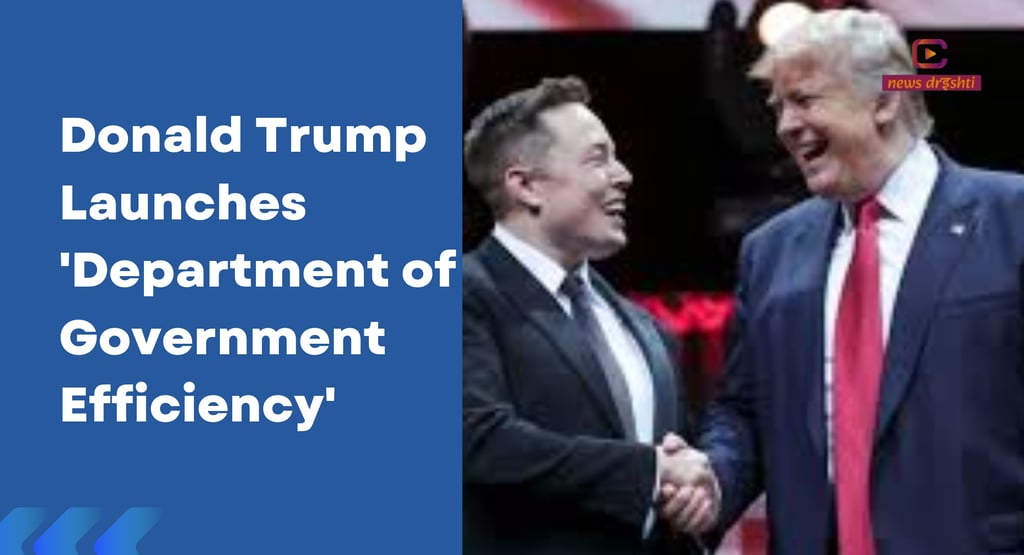Donald Trump Launches 'Department of Government Efficiency'
Former President Donald Trump has unveiled the 'Department of Government Efficiency' (DOGE), led by high-profile figures Elon Musk and Vivek Ramaswamy. This initiative aims to dismantle bureaucracy...
INTERNATIONAL


In a sweeping move for U.S. governance, former President Donald Trump has introduced the “Department of Government Efficiency,” nicknamed “DOGE,” with high-profile appointees Elon Musk and Vivek Ramaswamy at the helm. Describing the initiative as “the Manhattan Project of our time,” Trump emphasized its mission to dismantle bureaucracy, eliminate inefficiencies, and transform the federal government into a streamlined, tech-driven model of accountability and responsiveness.
DOGE’s ambitious objectives aim to reimagine how federal agencies operate, with a focus on reducing excessive regulations, trimming waste, and instilling an entrepreneurial spirit in federal processes. Musk, CEO of Tesla and SpaceX, and Ramaswamy, a biotech entrepreneur turned conservative advocate, are both known for their disruptive innovations and management styles, making them unconventional yet fitting choices for this initiative. Trump’s choice reflects his long-standing belief in leveraging private-sector expertise to bring about systemic reform within government institutions.
This initiative, slated for completion by July 4, 2026—America’s 250th Independence Day—aims to mark a milestone in federal reform. Trump’s vision sees DOGE as a patriotic effort to realign government with its citizens, symbolizing independence from inefficiency and fiscal mismanagement. The decision to create DOGE outside the formal government structure enables it to sidestep some traditional restrictions, a feature that has raised questions about transparency and ethical oversight. Both Musk and Ramaswamy’s roles allow them to continue holding private sector interests without the legal requirements faced by federal employees, creating a unique but controversial setup.
While some have drawn parallels between DOGE and the original World War II Manhattan Project, Trump’s plan to bring Musk and Ramaswamy on board speaks to a modern goal of reshaping governance through innovation rather than invention. Musk’s record of cost-cutting and operational restructuring, combined with Ramaswamy’s advocacy for smaller government, positions them to drive ambitious changes, particularly through tech-driven solutions and private-sector management principles.
Observers are watching closely as DOGE seeks to identify inefficiencies in the estimated $6.5 trillion annual federal budget. While proponents are optimistic, skeptics point to previous reform efforts that faced resistance from entrenched bureaucratic interests. However, with Musk and Ramaswamy operating from an independent vantage point, supporters argue DOGE may be better positioned to bypass traditional roadblocks.
With the clock ticking toward 2026, DOGE’s success will depend on its ability to achieve Trump’s vision of a leaner, more efficient government. Should Musk and Ramaswamy succeed, their work could pave the way for a new era of federal operations—one that embodies Trump’s vision of governance, dedicated to “We the People,” with a strong focus on innovation, transparency, and accountability. Whether DOGE will live up to its ambitious mission remains to be seen, but the stakes for government reform have rarely been this high.
